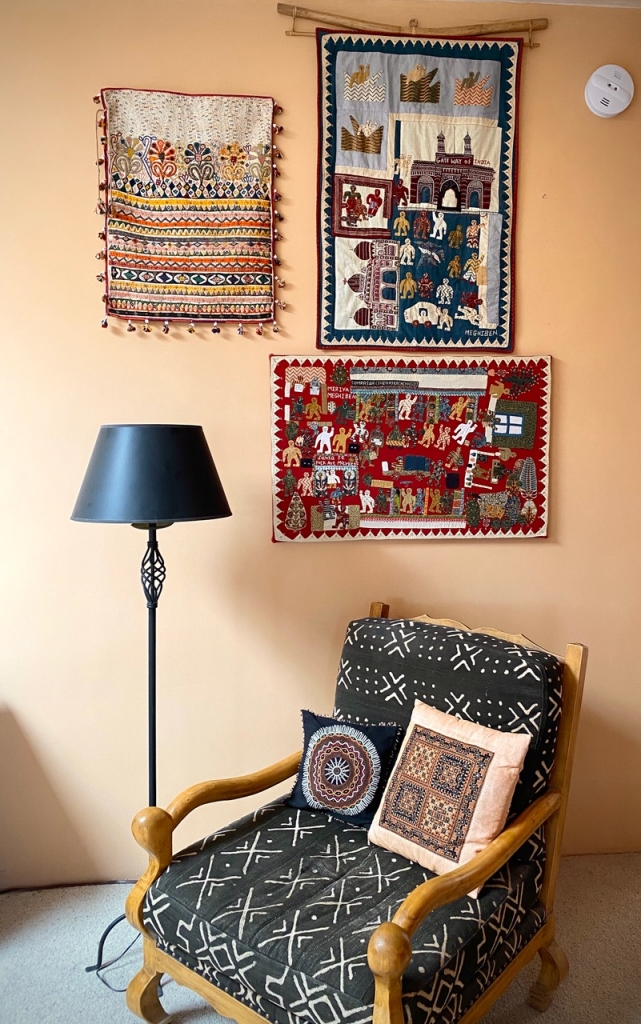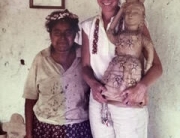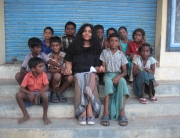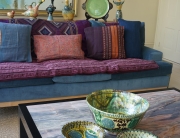 When asked about favorite folk art, people love to tell stories. I first began hearing these stories 35 years ago when my family lived in Malaysia for a year. The Director General of Kraftangan Malaysia, a government ministry focused on tourism and arts, invited me to join as a researcher for marketing initiatives. My task was to meet with travelers to Malaysia and expatriates residing in the country. I was to elicit meanings that participants’ favorite folk art evoke. Kraftangan planned to apply the research findings to the marketing of folk art in Malaysia.
When asked about favorite folk art, people love to tell stories. I first began hearing these stories 35 years ago when my family lived in Malaysia for a year. The Director General of Kraftangan Malaysia, a government ministry focused on tourism and arts, invited me to join as a researcher for marketing initiatives. My task was to meet with travelers to Malaysia and expatriates residing in the country. I was to elicit meanings that participants’ favorite folk art evoke. Kraftangan planned to apply the research findings to the marketing of folk art in Malaysia.
Over that year, people effusively shared stories centered on their cherished folk art. I learned that folk art objects acquired during travel were among many storytellers’ most valued possessions. Their tales repeatedly focused on two themes, which never wavered as I continued this research vein for my next 25 years in academia. Some people linked their favored objects to experiences in obtaining folk art. Individuals recalled protracted and sometimes hazardous travel over treacherous roads to arrive at a workshop. Details emerged of rural markets, tiny shops, and challenges of negotiating when buyer and seller did not share a common language. The folk art purchased on these action-filled shopping trips often acquired trophy-like status when displayed in the owners’ homes.
Other individuals recalled memories of meeting artists—friendships that in some cases endured over the years. Travelers described sitting on the floor of a workshop as artists demonstrated the intricate details of their work. They valued hearing how artists acquired their skills, frequently as young children at the hands of a parent or elder. These encounters often segued into lengthy conversations, drinking tea, sharing a meal, touring artists’ homes, and meeting their families. In common with the travelers, I have interviewed over the years, I also recall meeting the artists and participating in adventures while buying folk art. I share my stories for folk art, in this case all from India, in our Santa Fe home.
The two right-hand textiles are at the heart of my evolving friendship with Meghiben, a diminutive, perpetually smiling member of the Kala Raksha artisan group in Sumrasar. From the moment Meghiben took my hand and motioned me to join her on the floor, I was smitten. She had recently participated in a workshop to create embroidered narratives of artists’ lives. Eager to tell me about her textile (top right), Meghiben expanded on her recent visit to Mumbai. The textile narrative depicts the arched Gateway of India set on the Arabian Sea and surrounded by boats, people feeding pigeons on the street, and the grand old Taj hotel. She excitedly pointed out a group of women sitting as a group (in the middle left). One of the women is holding a notebook or laptop computer. I asked Megihben, “Who is that woman?” With a grin, she replied, “That’s Hilary Clinton!”
My story continues as the next year Kala Raksha selected Meghiben to attend the International Folk Art Market in Santa Fe. Our family hosted the Kala Raksha group. At sunrise each morning, Meghiben walked around our property and returned to ask my husband, “Where are all the people on the road…and the animals?” At the market, when she wasn’t busy engaging with artists in the Kala Raksha booth, she wandered every corner of the marketplace. I wondered what she would take home in her memories.
Two years later, when I once again visited Kala Raksha, I found out. The moment I entered the compound, Meghiben darted out of the room, quickly returning with a bundle under her arm. We sat on a bench, and she unfolded the textile (bottom right) on my lap. I was astounded at what I saw—Meghiben’s vision of the Santa Fe Folk Art Market! Just as the market is crowded, Meghiben packed her textile with details. The market’s iconic sign welcomes visitors as they ascend museum hill. Folk artists display and sell their art in booths, each differing in product and presentation. Volunteers work at computers in two payment stations. A garbage collector picks up trash. Vendors sell drinks from a trolley. For me, this textile offers a unique exchange between friends. Just as I recall glimpses of her life in telling my stories, she presents her visions of mine in her textile gift.
My folk art stories also recount buying encounters. On the left is a Rabari dowry bag I purchased in Bhujodi. I didn’t know much about the bag —who or when it was made—but I’ll never forget the Indian textile extravaganza from which it emerged. As travelers with the Textile Society of America, our group of 15 artists, scholars, and collectors visited the home of textile collector Vanka Kana Rabari. Walking through the front door, we entered a textile nirvana. Textiles lay in huge piles on the floor, decorated the walls, dangled from the ceiling, and filled every shelf. Following a short talk by our host, textile madness ensued! Each traveler staked out a space on the floor to peruse a personal stack of treasures she had gathered. For me, this well-used dowry bag spoke to my love of surface embellishment. Appliqued and embroidered shapes ascended in rows of color, topped with flower-like motifs. Thread tassels tied with shells bordered the edge. Later, I learned that the embroiderer, a Dhebaria Rebaria woman, likely carried her possessions in this bag when she moved to her new husband’s home.
As I think back on the folk art stories I have heard and told, they tell of connections. Through stories, we learn of daily life different from our own, helping us to protect unique cultural traditions and foster commonalities. Through stories, we forge human friendships for learning from each other. Through stories, we support folk art for the beauty it provides in everyday life for both artists and buyers. For these reasons, folk art stories warrant telling and retelling.
*****
Mary Littrell is Professor and Department Head Emeritus in Design and Merchandising at Colorado State University. Internationally, she has taught at University Pertanian Malaysia, Beijing Institute of Fashion Technology, Fu Jen University in Taiwan, and Semester at Sea. Her research focuses on how textile artisan enterprises achieve viability in the increasingly competitive global market for hand made goods—working with artists in Ghana, Guatemala, India, Uzbekistan, and Afghanistan. Her most recent book, Embroidering within Boundaries: Afghan Women Create a Future, was co-authored with IFAM artist Rangina Hamida. Since moving to Santa Fe, Mary has served on the IFAM Artist Selection Committee, chairing the group for four years. Currently she co-chairs the IFAM Artist Resource Fair. She also serves as a Research Associate at the Museum of International Folk Art in Santa Fe.





